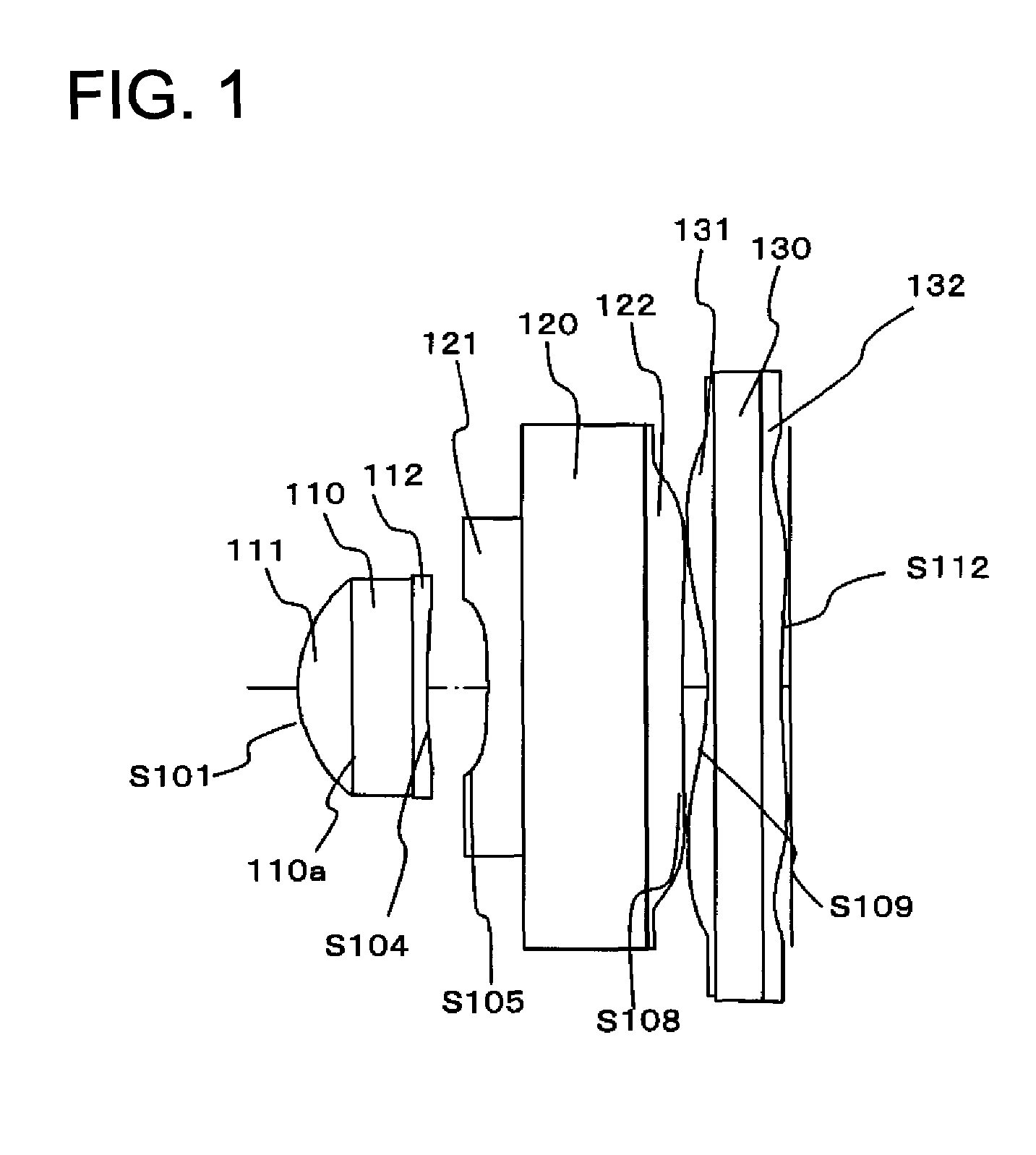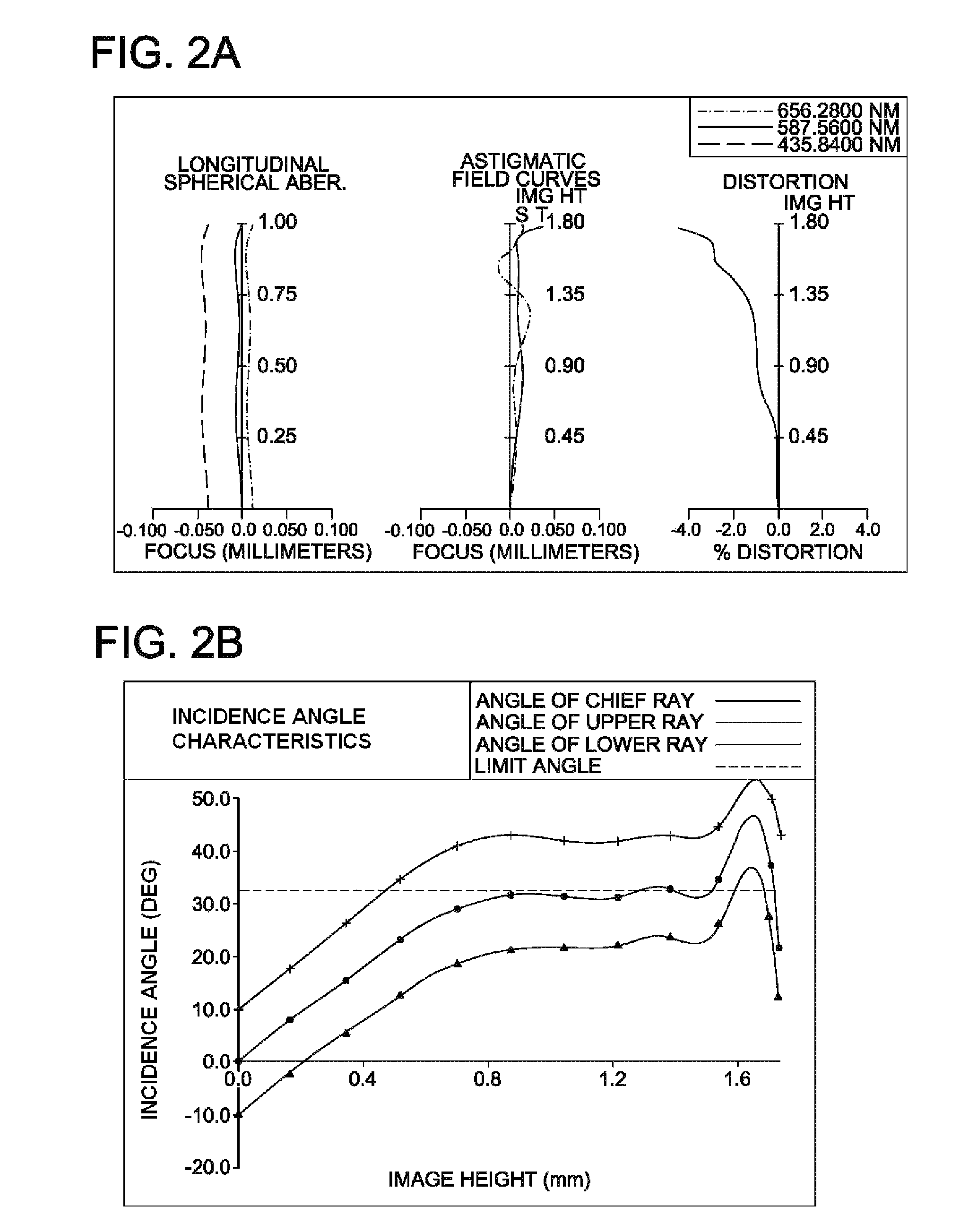Imaging lens, imaging device, and mobile terminal
a technology of imaging device and lens, applied in the field of imaging lens, can solve the problems of difficult to form diffracting surface and refracting interface simultaneously on the lens flat plate, and achieve the effect of greater curvatur
- Summary
- Abstract
- Description
- Claims
- Application Information
AI Technical Summary
Benefits of technology
Problems solved by technology
Method used
Image
Examples
first embodiment
of the Present Invention
[0134]Hereinafter, an imaging lens according to a first embodiment of the present invention will be described. FIG. 1 illustrates a sectional view of the imaging lens according to this embodiment of the present invention.
[0135]As illustrated in FIG. 1, the imaging lens according to this embodiment of the present invention is configured of a lens system including a 1f-th lens element 111, an aperture diaphragm 110a, a first lens flat plate 110, a 1b-th lens element 112, a 2f-th lens element 121, a second lens flat plate 120, a 2b-th lens element 122, a 3f-th lens element 131, a third lens flat plate 130 and a 3b-th lens element 132 in the order from the object side. Here, the imaging lens configured of three lenses is described in this embodiment. However, the imaging lens may be configured of more lenses. For example, in the case where “i” (i>=4) number of lenses are used, an i-th lens disposed at the most image side may be configured similar to the third len...
second embodiment
[0145]FIG. 3 illustrates a sectional view of the imaging lens according to an second embodiment of the present invention.
[0146]As illustrated in FIG. 3, the imaging lens according to this embodiment of the present invention is configured of a lens system including a 1f-th lens element 211, an aperture diaphragm 210a, a first lens flat plate 210, a 1b-th lens element 212, a 2f-th lens element 221, a second lens flat plate 220, a 2b-th lens element 222, a 3f-th lens element 231, a third lens flat plate 230 and a 3b-th lens element 232 in the order from the object side. Here, the imaging lens configured of three lenses is described in this embodiment. However, the imaging lens may be configured of more lenses. For example, in the case where “i” (i≧4) number of lenses are used, an i-th lens disposed at the most image side may be configured similar to the third lens in this embodiment. In this case, any kind of lens (for example, a bonded lens, a spherical lens or an aspherical lens) may...
third embodiment
[0154]FIG. 5 illustrates a sectional view of the imaging lens according to a third embodiment of the present invention.
[0155]As illustrated in FIG. 5, the imaging lens according to this embodiment of the present invention is configured of a lens system including a 1f-th lens element 311, an aperture diaphragm 310a, a first lens flat plate 310, a 1b-th lens element 312, a 2f-th lens element 321, a second lens flat plate 320, a 2b-th lens element 322, a 3f-th lens element 331, a third lens flat plate 330 and a 3b-th lens element 332 in the order from the object side. Here, the imaging lens configured of three lenses is described in this embodiment. However, the imaging lens may be configured of more lenses. For example, in the case where “i” (i>=4) number of lenses are used, an i-th lens disposed at the most image side may be configured similar to the third lens in this embodiment. In this case, any kind of lens (for example, a bonded lens, a spherical lens or an aspherical lens) may ...
PUM
 Login to View More
Login to View More Abstract
Description
Claims
Application Information
 Login to View More
Login to View More - R&D
- Intellectual Property
- Life Sciences
- Materials
- Tech Scout
- Unparalleled Data Quality
- Higher Quality Content
- 60% Fewer Hallucinations
Browse by: Latest US Patents, China's latest patents, Technical Efficacy Thesaurus, Application Domain, Technology Topic, Popular Technical Reports.
© 2025 PatSnap. All rights reserved.Legal|Privacy policy|Modern Slavery Act Transparency Statement|Sitemap|About US| Contact US: help@patsnap.com



